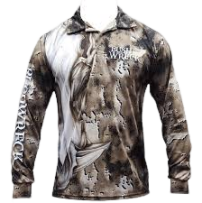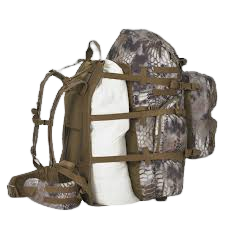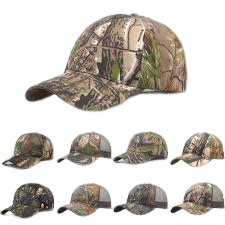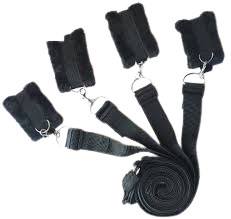Unveiling the Essence of Hunting Shirts: Functionality, Style, and Tradition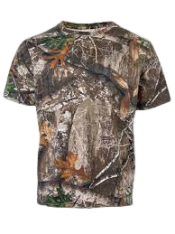
Introduction
Hunting, an age old practice deeply ingrained in human history, has evolved from a necessity for survival to a cherished tradition and recreational activity. Alongside the evolution of hunting itself, the gear and clothing worn by hunters have undergone significant transformations. Among the essential elements of a hunter’s attire, the hunting shirt stands out as a symbol of functionality, style, and tradition.
The Evolution of Hunting Shirts
The history of hunting shirts traces back to the early days of human civilization when our ancestors relied on hunting for sustenance. In those primitive times, garments made from animal hides served the dual purpose of protecting hunters from the elements and camouflaging them in their natural surroundings.
As societies progressed, so did the technology and techniques used in hunting, leading to innovations in hunting apparel. The hunting shirt, once a basic piece of protective clothing, began to take on more specialized features to cater to the diverse needs of hunters.
Functionality Matters: Features of Modern Hunting Shirts
Modern hunting shirts are designed with a keen understanding of the challenges hunters face in the field. The functionality of these shirts is a result of thoughtful design, cutting edge materials, and a focus on enhancing the overall hunting experience. Some key features include
-
Moisture Wicking Technology
Hunting often involves physical exertion and exposure to varying weather conditions. Moisture wicking technology in hunting shirts helps keep the wearer dry by quickly moving sweat away from the body.
-
Breathability
Ventilation is crucial during intense activities. Many hunting shirts are crafted from breathable fabrics that allow air circulation, preventing overheating and ensuring comfort during extended periods of wear.
-
Camouflage Patterns
Camouflage is a staple in hunting shirts, aiding hunters in blending seamlessly with their surroundings. Advances in pattern design take into account different terrains and seasons, providing optimal concealment.
-
Scent Control
Animals have a keen sense of smell, and hunters strive to minimize their scent to avoid detection. Hunting shirts with scent control technologies help reduce odor, increasing the chances of a successful hunt.
-
Durability
Hunting environments can be harsh, and clothing needs to withstand rough conditions. Many hunting shirts are made from durable materials, resistant to abrasion and wear and tear.
Style Meets Function: The Aesthetics of Hunting Shirts
While functionality is paramount, the aesthetics of hunting shirts have not been overlooked. Modern hunting shirts strike a balance between practicality and style, allowing hunters to express their individuality while embracing tradition. Key elements of the stylish hunting shirt include
-
Cut and Fit
Hunting shirts come in a variety of cuts and fits, catering to different preferences and body types. Whether a loose fit for comfort or a more tailored look, hunters can find shirts that suit their style.
-
Color and Pattern Options
While camouflage remains a staple, hunting shirts now come in a range of colors and patterns. This not only allows for personal expression but also provides versatility for different hunting environments and seasons.
-
Embroidery and Logos
Many hunting shirts feature embroidered logos or symbols that signify allegiance to a particular brand or express a connection to hunting traditions. These subtle embellishments add a touch of personalization.
-
Multi Functional Design
Some hunting shirts are designed for versatility, transitioning seamlessly from the field to casual wear. This adaptability caters to hunters who appreciate clothing that can serve dual purposes.
Tradition in Every Stitch: The Cultural Significance of Hunting Shirts
Beyond their functional and stylistic attributes, hunting shirt carry a deep cultural and traditional significance. They often become emblematic of a hunter’s connection to nature, a respect for wildlife, and a commitment to ethical hunting practices. The cultural aspects of hunting shirt include
-
Symbolism
Certain patterns or symbols on hunting shirt may carry cultural or regional significance. These symbols often represent a connection to the land, wildlife, or specific hunting traditions.
-
Rituals and Ceremonies
In some hunting communities, the donning of a particular hunting shirt may be part of pre hunt rituals or ceremonies. It symbolizes a connection to the past and a shared identity among hunters.
-
Handcrafted and Customized
Traditionalists may opt for handcrafted or custom made hunting shirt. These bespoke garments often feature intricate details, reflecting the hunter’s personal journey, achievements, or affiliations within the hunting community.
-
Passing Down Through Generations
Hunting shirts, like other hunting gear, are sometimes passed down through generations. This practice not only preserves the garment’s functionality but also carries forward the stories and experiences of past hunts.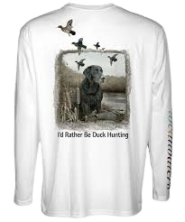
Choosing the Right Hunting Shirt: A Personal Decision
Selecting the perfect hunting shirt is a personal decision that depends on a variety of factors, including the type of hunting, personal style preferences, and environmental conditions. Whether a hunter opts for a high tech moisture wicking shirt for a challenging backcountry hunt or a classic flannel for a nostalgic deer camp experience, the choice reflects an individual’s connection to the outdoors and their hunting philosophy.
As technology continues to advance, the future of hunting shirts holds exciting possibilities. Innovations may include even more advanced camouflage patterns, incorporation of smart textiles for enhanced performance, and sustainable materials to reduce the environmental impact of hunting apparel.
Sustainability, in particular, is becoming a focal point in the outdoor industry. The use of eco friendly fabrics, responsible manufacturing processes, and recyclable materials are likely to play a more significant role in shaping the next generation of hunting shirts.
Technology has undeniably left its mark on every aspect of our lives, and the world of hunting shirts is no exception. In recent years, there has been a surge in the integration of advanced technologies into these garments, elevating their functionality to new heights.
-
GPS Integration
Some hunting shirts now come equipped with GPS technology, allowing hunters to track their movements and mark locations of interest. This can be particularly useful for those exploring vast terrains or unfamiliar hunting grounds.
-
Heated Apparel
In colder climates, heated hunting shirts have become a game changer. These shirts feature built in heating elements that can be controlled to provide warmth in freezing conditions, ensuring hunters stay comfortable and focused on the task at hand.
-
Solar Charging Capabilities
Solar panels integrated into hunting shirts serve a dual purpose—charging devices such as GPS units or smartphones and providing an additional layer of camouflage. This innovation aligns with the growing trend of sustainable and self sufficient outdoor gear.
-
Smart Fabrics
The development of smart fabrics with embedded sensors is on the horizon. These fabrics can monitor vital signs, such as body temperature and heart rate, offering real time data to the hunter. This information can be invaluable in managing physical exertion and avoiding overexertion during hunts.
The hunting apparel market is saturated with a myriad of brands offering diverse options for hunting shirts. Established brands such as Sitka, Under Armour, and Cabela’s have long been synonymous with quality and innovation. Each brand brings its unique approach to design, materials, and technology, catering to a broad spectrum of hunters with different needs and preferences.
The outdoor industry, including hunting apparel, is witnessing a paradigm shift towards sustainability. As environmental consciousness grows, hunters are increasingly seeking gear that minimizes their ecological footprint.
-
Eco Friendly Materials
Sustainable hunting shirts often incorporate eco friendly materials such as recycled polyester, organic cotton, and bamboo fibers. These materials reduce reliance on traditional, resource intensive fabrics, contributing to a more sustainable industry.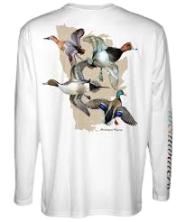
-
Minimalistic Packaging
Brands committed to sustainability are reevaluating their packaging practices. Minimalistic, eco friendly packaging is gaining popularity as a way to reduce waste and minimize the environmental impact of product packaging.
-
Ethical Manufacturing Practices
Conscious consumers are demanding transparency regarding the production processes of their hunting shirts. Brands are responding by adopting ethical manufacturing practices, ensuring fair labor conditions and minimizing the environmental impact of production.
-
Repair and Recycle Programs
Some forward thinking brands are implementing repair and recycle programs for their hunting shirts. These initiatives aim to extend the lifespan of garments, reducing overall waste in the industry.
Conclusion
In conclusion, hunting shirts are not mere articles of clothing; they are a tapestry woven with threads of tradition, innovation, and cultural significance. From their humble origins as practical garments for survival, hunting shirts have evolved into sophisticated pieces of gear that reflect the diverse needs and preferences of today’s hunters.
As we gaze into the future of hunting shirts, the interplay between tradition and innovation continues to shape their design and functionality. Whether adorned with cutting edge technology, sustainable materials, or symbols steeped in tradition, hunting shirts remain a symbol of the enduring connection between humanity and the natural world—a connection that transcends time, weaving together the past, present, and future of the hunting experience.
